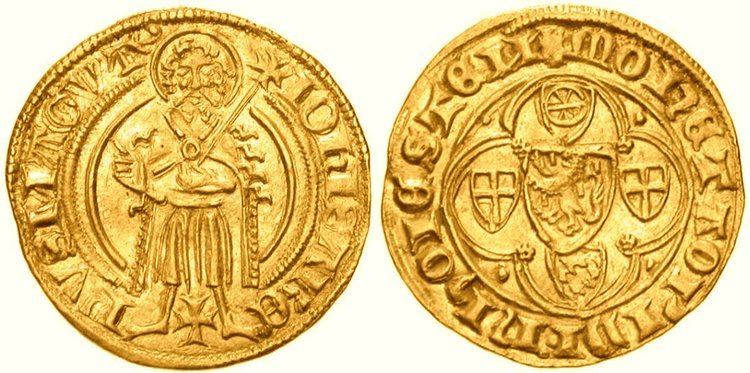 | ||
Rhenish guilder (German: Rheinischer Gulden; Latin: florenus Rheni) is the name of the golden, base currency coin of the Rhineland in the 14th and 15th centuries.
Contents
Formation
The Rhenish gold guilder was created when the electors of Cologne, Trier and Mainz were rewarded for their support in the election of Charles IV with a right to mint gold coins (Goldmünzprivileg), a right derived from the Golden Bull. Trier was given the privilege on 25 November 1346, Cologne on 26 November 1346 and Mainz on 22 January 1354.
As a result of the widespread minting of gold guilders by the electors of Cologne, Mainz, Trier and the Electorate of the Palatinate (Rhine Minting Association), Rhenish guilders achieved significance in the 14th and 15th centuries and became the base currency of the Rhine region. Due to a lack of gold there was a shortage of guilders in the late 15th and 16th century, and they were even minted with a gold content reduced by up to a half.
Importance
Rhenish gold guilders were of central importance to the German monetary system until modern times. It developed into the most common long-distance trading coin in Bohemia, Hungary, Germany, Switzerland, Moravia, the Netherlands, Spain and France. Not only gold, but also silver coins were valued according to their value in Rhenish guilders, and thus their rate (value) was set.
The annual rent in the Augsburg Fuggerei is to this day a Rhenish guilder (€0.88 today).
Replacement
When the imperial minting ordinance (Reichsmünzordnung) was passed, the silver equivalent of the gold guilder became the standard coin. The Rhenish guilder was gradually replaced as a gold coin by the ducat. However the Rhenish guilder continued to be used as a coin, valued at 60 Kreuzer, until the 17th century.
